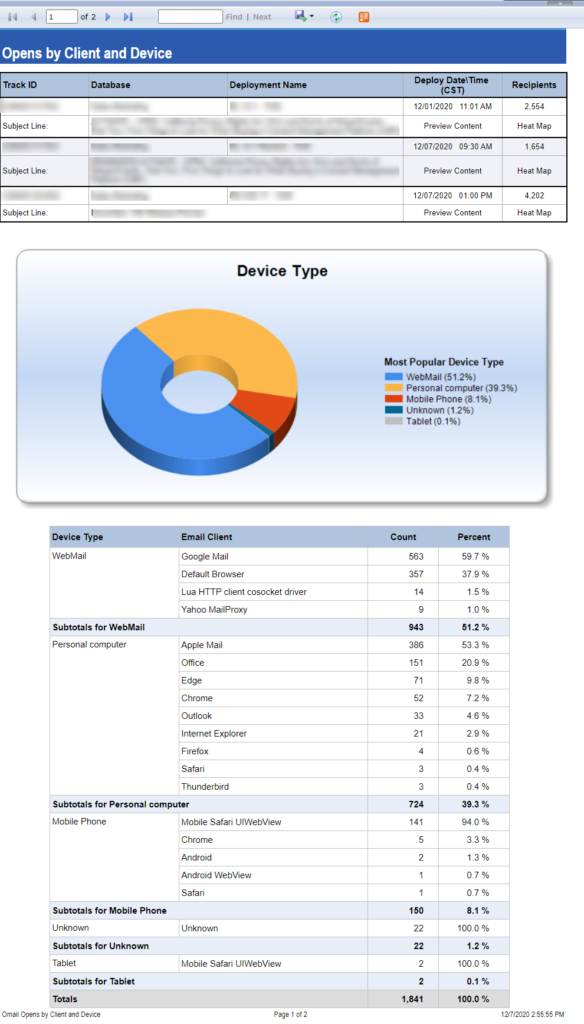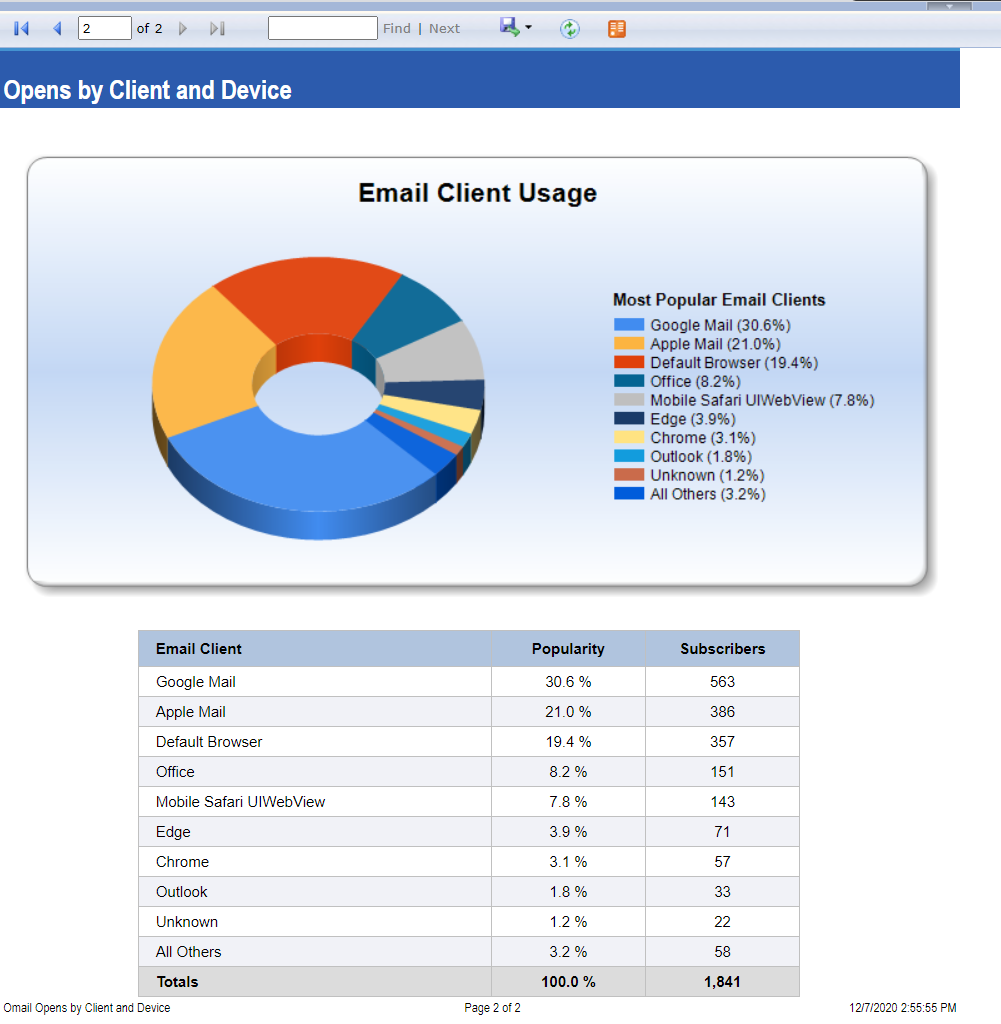Reports – Email Device and Client Type Reporting
Summary
The Opens by Client and Device report is available in the Reports and Analytics menu as well as within our Deployment Delivery reports.
This report will show the Device Type and Email Client values for all recipients who opened the selected deployment(s). The data that displays in this report is obtained by parsing the User Agent when Omeda’s “open” pixel is downloaded within the recipient’s mailbox. This user-agent string contains information identifying the application, device, or operating system and is provided by the email client or the browser used to open the email. The specificity of the information Omeda receives can vary between email clients.
Description
In the Reports and Analytics section, under Email Reports, the report can be accessed by clicking ‘Opens by Client and Device’. You can then select the Start and End date, the Deployment Type, the Designation, and, if desired, one or more specific Deployments.
After clicking ‘View Report’, the Report will display. On the first page of the report, you will see a pie chart of all device types used to open the applicable deployments. For recipients who opened the deployment using a Webmail application like Gmail or Yahoo, the device type is not available. Because of this, they are broken out into their own device type category, Webmail. Below the pie chart, the Email Clients for each Device Type will be further broken out.
Page 1

On Page 2, a break out of only Email Clients will be listed, descending from the Email Client with the most opens.
Page 2

Additional Information
When the device type information is not provided, the Device Type in this report is listed as “WebMail”. Common email clients like Google Mail and Yahoo, listed as Yahoo MailProxy, will be listed here.
If no information is provided, this data will be listed in the “Unknown” section of the report.
In some cases, our User Agent parser may categorize the Email Client as “Default Browser”. In the report, the count can be clicked to view these records and the User Agent string associated with them.
In the Webmail section you may notice the Email Client, “Mozilla/5.0” This row contains the opens with the Mozilla/5.0 user-agent which likely corresponds with Apple Mail opens where the user has opted into Mail Privacy Protection. See our blog post here for more information, https://www.omeda.com/impact-of-apples-mail-privacy-protection/.
In the Mobile Category, the email client, Mobile Safari UIWebView is commonly listed. This category describes an open that occurred within an application on an Apple device.
Gmail Pre-Fetching: Gmail loads all images, including tracking pixels, as part of its pre-fetching process. Gmail’s preloading of images allows the platform to ensure that the user’s email experience is faster. However, this means that emails can be flagged as “opened” even before the user has actually opened the email themselves, resulted in skewed open rates.
The request for prefetching is made using a specific user-agent string, which helps identify the Gmail application. (ex: Mozilla/5.0 (Windows NT 10.0; Win64; x64) AppleWebKit/537.36 (KHTML, like Gecko) Chrome/42.0.2311.135 Safari/537.36 Edge/12.246 Mozilla/5.0. Opens generated from this string are indicative of the Gmail prefetch activity, as these happen within seconds of delivery. You may see continued genuine human open activity after seeing the Gmail prefetch open activity. However, this would come from a different user agent string. There is no evidence to support that simply having an open pixel is going to get you placed in the spam folder at Gmail. If a sender is having issues with the spam folder or getting “this message looks suspicious” banners in Gmail, it is most likely due to domain reputation issues and not simply because they have an open pixel in their message.
Table of Contents
